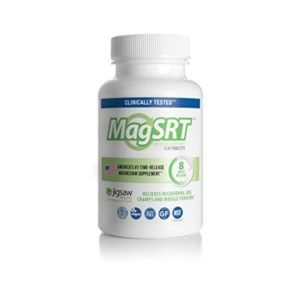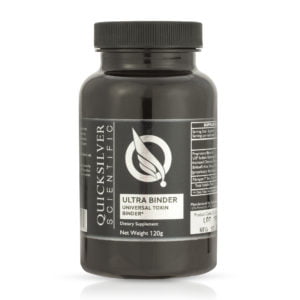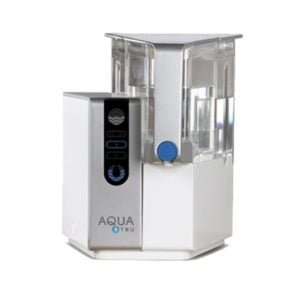Sharing is caring!
After years of a worsening opioid abuse epidemic that has reduced life expectancy in the USA, Oklahoma pursued the first case against Johnson & Johnson – and won. On Monday, August 26th, a judge ruled that the drug giant must pay the state $572 million as compensation. Although they aimed for $17 billion, and money cannot bring back the lives lost to addiction, it’s a start. How did we get here with opioids, and how can natural remedies help kick this addiction?
Opioid Epidemic: Sad Beginnings
In this recent ruling, Judge Balkman wrote that Johnson & Johnson spread “false, misleading, and dangerous marketing campaigns” that caused “increasing rates of addiction [and] overdose deaths.” Oklahoma is suffering terribly from this epidemic. Between 2015 and 2018, doctors wrote 18 million opioid prescriptions for a population of just 3.9 million. Over 6,000 people in the state have died from opioid overdoses since 2000, and many more are still addicted. It is sadly ironic that this corporation, which has traditionally held a family-friendly image selling baby powder, Band-Aids, and soap contributed to this outbreak.
This successful uphill battle against power and (false) image, encouraged lawyers representing over 2,000 pending cases against opioid manufacturers, calling it a “critical step forward.” Many are using similar legal strategies. However, this trial was different in that Oklahoma blamed its opioid crisis on one single corporation — Johnson & Johnson.
Johnson & Johnson Only Sells One Percent Of Opioids — Why Is This Trial Making Such An Impact?
In the 1980s, Johnson & Johnson signed a contract with poppy farmers in Tasmania, Australia, to supply 60 percent of their opiate ingredients. They also provide most of the USA’s opioid materials to other drug manufacturers. From 2000 to 2011, they made over 150,000 visits to Oklahoma doctors, focusing on high-volume prescribers. To patients, they aggressively promoted an image of safety with campaigns aimed at women, veterans, and teenagers. These involved recruiting front groups of pain patients and pain specialists to insist that the drugs were safe and effective.
This epidemic reaches countrywide and many other companies have contributed. Diverse corporate interests, from Walmart to Walgreens and other manufacturers of generic drugs, are also flooding the USA with billions of opioid pills. Although laws require them to monitor and report suspicious orders, these often go ignored.
The initial introduction to opioids is equally diverse and arguably careless, including doling out prescriptions for a routine wisdom tooth removal. Research shows that a combination of ibuprofen and acetaminophen is more effective, but dentists still wrote 18.1 million opioid prescriptions in 2017. “For many, dental care such as wisdom teeth extraction is the first opioid exposure,” states Dr. Chad Brummett, who researches pain at the University of Michigan. If you are taking opioids already and want to get off them, you may be wondering, what natural remedies can be used to reduce cravings, withdrawal symptoms, and pain?
How CBD Oil Can Help You Kick Opioids
If you want to get off opioids, you need to break the addiction and/or treat the cause of pain. CBD oil is one of the remedies that can help with both of these issues. Once demonized as a Schedule 1 substance, CBD-rich hemp oils can help to relieve cravings for a range of addictive drugs. These include tobacco, alcohol, and opioids such as heroin.
CBD is an antidepressant, anti-anxiety, and helps to protect the liver and brain from toxic damage. The owner of HoneyColony herself turned to CBD to get off Xanax. With its anti-anxiety properties, she did not suffer withdrawal symptoms like panic or disorientation. Furthermore, cannabinoids such as CBD are also often better than opioids in controlling severe pain, according to a study on opioid-resistant cancer pain which found a 30 percent reduction in severity. Some of this reduction is because of CBD’s anti-inflammatory properties. On top of the decrease in inflammation, if you’re in pain because of a fracture, you’re in luck. CBD can speed up bone repair by stimulating the connective tissue-building ability of osteoblasts.
When choosing a CBD oil, look for organic and liposomal, a formula that uses full-spectrum versus isolate to give the maximum benefit, including the other cannabinoids and terpenes in hemp that have additional healing properties. For example, cannabigerol (CBG) is more effective in relieving pain and blocking the inflammatory lipoxygenase pathway than THC. Limonene, a terpene, reduces anxiety and depression, while beta-myrcene and beta-caryophyllene are anti-inflammatory through different pathways.
Nutritional Support
Nutritional support is a powerful tool for leaving opioids behind. Calcium, magnesium, and potassium deficiencies are common during addiction and withdrawal. This results in many people suffering from muscle pain and cramps. Fruits, vegetables, and certain nuts, and legumes (if you can tolerate them) contain these minerals. If you can’t find relief from diet alone, supplementation is advisable
Other symptoms of withdrawal include sweating and diarrhea, which cause dehydration. Drinking plenty of clean quality water can prevent this and help you detox. But, remember to remineralize it if you have a reverse osmosis filter.
Finally, anti-inflammatory foods such as oily fish, green tea, and turmeric can soothe inflammation. Not only does inflammation cause chronic pain, but opioids create inflammation in the brain. The drugs’ pain-blocking, sedative effects mean that you first notice this during withdrawal.
The recent ruling in Oklahoma is a sign of progress, but the fight against opioid addiction is far from over. If you are affected personally by opioids, we recommend that you seek professional help to find the best treatments for you.
-
 Jigsaw Magnesium With SRT$22.97 — or subscribe and save up to 5%
Jigsaw Magnesium With SRT$22.97 — or subscribe and save up to 5% -
 Quicksilver Ultra Toxin Binder$80.00
Quicksilver Ultra Toxin Binder$80.00 -
 AquaTru® Reverse Osmosis Water Filter$449.00
AquaTru® Reverse Osmosis Water Filter$449.00
- Tags: addiction, anti-inflammation, CBD, opioids, Xanax




